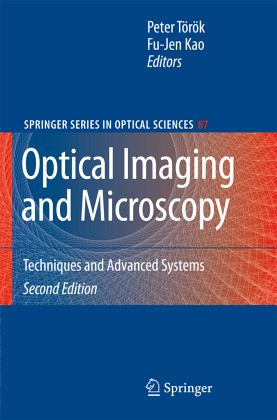
Optical Imaging and Microscopy
Techniques and Advanced Systems
Herausgegeben: Török, Peter; Kao, Fu-Jen
Versandkostenfrei!
Versandfertig in 6-10 Tagen
211,99 €
inkl. MwSt.

PAYBACK Punkte
106 °P sammeln!
It has been four years since the publication of the ?rst edition of this book. During these four years optical imaging has advanced considerably. Nevertheless, when we were asked to compile a second edition of this book the ?rst question we asked was: are there any topics that were missed out from the ?rst edition? Even though there are a fairly large number of subjects that we could potentially have considered it was decided to extend the book by two new chapters. The ?rst one is on the use of di?ractive optical elements in high quality objective lenses by Drs Brunner and Dobschal from Carl Z...
It has been four years since the publication of the ?rst edition of this book. During these four years optical imaging has advanced considerably. Nevertheless, when we were asked to compile a second edition of this book the ?rst question we asked was: are there any topics that were missed out from the ?rst edition? Even though there are a fairly large number of subjects that we could potentially have considered it was decided to extend the book by two new chapters. The ?rst one is on the use of di?ractive optical elements in high quality objective lenses by Drs Brunner and Dobschal from Carl Zeiss AG. It is particularly exciting to have this chapter in the book because it is likely that di?ractive elements will play an increasingly imp- tant role in high precision optical instrumentation in the future. The second new chapter is by Daniel Axelrod of University of Michigan on total internal re?ection ?uorescence (TIRF). We believe that many readers will ?nd the chapter from Prof. Axelrod, who developed TIRF about 20 years ago, insightful and very interesting. In addition to the new chapters some chapters have been revised and consid- ably expanded. These revisions are primarily there to include the most up-to-date material and recent advances of the ?eld. Special note of thanks must go to Drs Claus Ascheron and Angela Lahee of Springer-Verlagfor their encouragementand help.












